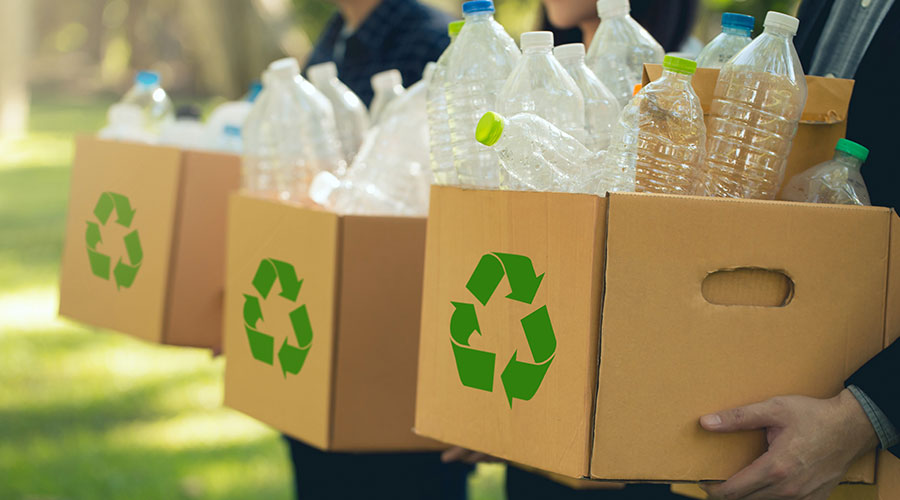
Sustainable Sites
LEED-EBOM offers points for a sustainable site management policy, which covers exterior cleaning, landscaping and maintenance, as well as the products selected. It also includes credits for pest management and erosion control plans. The plan must address everything from maintenance equipment ("replace conventional gas-powered machinery with electric-powered equivalents") to cleaning of sidewalks and snow and ice removal. The plan must also show how it exceeds standard practices in reducing the use and runoff of pollutants such as gasoline, oil, antifreeze and salts. Acceptable cleaning and maintenance materials can be found in the LEED Reference Guide for Green Building Operations & Maintenance, 2009 Edition.
Water Efficiency
The Water Efficiency section of LEED-EBOM is aimed at reducing facility water use in all respects. Indeed, a minimum of a 20 percent reduction in indoor fixture water use is a prerequisite in this section. In addition, up to five points are available for an additional 30 percent reduction in indoor fixture water use. Facility managers can earn up to two points for water metering, an extremely important strategy for maintaining water savings long term. As many as five points are available for totally eliminating landscaping water use (irrigation).
Energy and Atmosphere
Energy management is one of the most important components of a green facility management plan. For that reason, Energy and Atmosphere offers the most points of any LEED-EBOM category: 35. Benchmarking with the Energy Star Portfolio Manager is a recognized best practice for energy management, and LEED-EBOM requires a minimum of a 69 Energy Star score for certification. Up to 18 additional points are available for increasing scores on the Energy Star scale (95 = 18 points). One of the biggest challenges facility managers face is how best to document effective energy management. LEED-EBOM helps with that by requiring an operating plan that includes "at a minimum, an occupancy schedule, equipment run-time schedule, design set points for all HVAC equipment, and design lighting levels throughout the building." Changes in schedules or set points for any reason, including time of day, weekday vs. weekend or seasonal, need to be included in the plan. This section also includes up to six points for existing building commissioning, another key facet of ensuring ongoing efficiency.
Materials and Resources
The Materials and Resources section of LEED-EBOM covers just about anything that comes in or goes out of the facility. Two prerequisites in this section require facility managers to develop a sustainable purchasing policy and a solid waste management policy. Points are awarded for sustainable purchasing in the areas of ongoing consumables, electric-powered equipment, furniture and even food. Waste management points are awarded for conducting an audit and reducing consumable waste. One of the more overlooked credits in this section is Materials and Resources Credit 3: Sustainable Purchasing — Facility Alterations and Additions, which awards one point if sustainable materials account for at least 50 percent (by cost) of any purchases used for renovations, demolitions, refits and new construction. Why can this be easily overlooked? Because if you're hiring a contractor, it applies to the materials they use as well.
Indoor Environmental Quality
Indoor Environmental Quality includes indoor air quality itself, as well as occupant comfort and green cleaning. A prerequisite here requires compliance with ASHRAE 62.1-2007. IAQ credits focus on monitoring and appropriate ventilation, including during construction projects. The first credit for occupant comfort is a survey, which solicits feedback from building occupants on thermal comfort, acoustics, IAQ, cleanliness and "any other comfort issues." Keeping an eye on occupant satisfaction is a critical component of ensuring that a building is performing as intended. If occupants are consistently uncomfortable, chances are you have issues. The green cleaning credits focus on two main areas: chemicals used and lack of disruption when cleaning is done while occupants are in the building, i.e., day cleaning. The rating system awards points for sustainable chemicals that have as little environmental impact as possible. Cleaning equipment such as vacuum cleaners and floor buffers is required to operate with a sound level of less than 70 dBA.
Innovation in Operations
While LEED-EBOM is intended to be a guide for sustainable facility management, it also encourages and rewards creative thinking and exemplary performance. The Innovation in Operations section offers points for "significant, measurable environmental performance using an operations, maintenance or system upgrade strategy not addressed" in the LEED-EBOM rating system. In other words, if you have a new idea that has environmental benefits, points can be earned by documenting what the benefit is, how it was achieved, and how it meets the standard of innovation. There are also two other paths to points that don't involve creating something new. Exemplary Performance rewards points for going above and beyond the requirements of an existing credit, while Pilot Credit offers points for participating in pilot programs.























